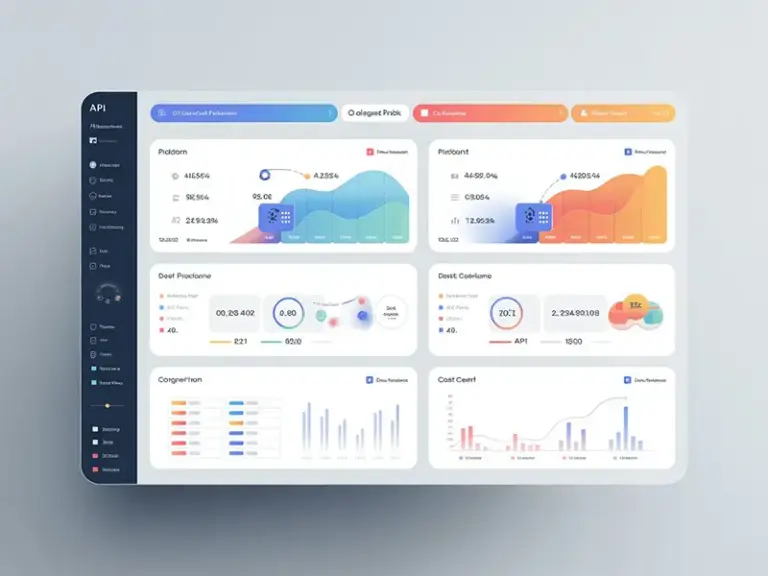核心关键词:Pangolin API vs SellerSprite
近义关键词:E-commerce data scraping API comparison,Amazon data extraction tools,API cost-effectiveness analysis,SellerSprite alternative solutions
元描述:Pangolin vs SellerSprite API comprehensive comparison: cost-effectiveness, feature depth, technical architecture, and user experience analysis to help you choose the best e-commerce data scraping solution.
建议URL:/pangolin-vs-sellersprite-api-comprehensive-comparison
SEO标签:Pangolin API,SellerSprite API,e-commerce data scraping,Amazon data extraction,API comparison,data collection tools,e-commerce analytics,product selection,cost analysis,technical comparison,data quality,API services,e-commerce tools,data solutions,competitive analysis
配图提示词:Professional comparison infographic showing two modern API platforms side by side, with data flow diagrams, performance charts, and cost analysis graphs, clean tech aesthetic, blue and orange color scheme, dashboard interface elements
图片标题:Pangolin vs SellerSprite API Product Features and Cost-Effectiveness Comparison Chart
图片替代文本:Detailed comparison analysis chart of Pangolin and SellerSprite API products
图片说明:Comprehensive comparison analysis of two leading e-commerce data scraping API products
图片描述:Detailed comparison data charts showing Pangolin and SellerSprite across dimensions of feature coverage, cost-effectiveness, and technical architecture
In the e-commerce data scraping landscape, choosing the right API service provider often determines business success or failure. Among the numerous data collection tools available in the market, Pangolin Scrape API and SellerSprite stand out as two highly regarded solutions, each with unique advantages and positioning. This article provides an in-depth analysis of both products across multiple dimensions to help you make the most informed decision.
Market Landscape: The Urgent Need for E-commerce Data Collection
As e-commerce competition intensifies, data-driven decision making has become crucial for business survival. Whether it’s product selection, pricing strategy development, competitor monitoring, or market trend analysis, all depend on accurate and timely data support. However, traditional manual data collection methods are inefficient, while building in-house scraping systems faces challenges such as high technical barriers, substantial maintenance costs, and poor stability.
Against this backdrop, professional API data collection services have emerged. SellerSprite, as one of the early entrants in this field domestically, has secured an important market position with its comprehensive features and user base. Meanwhile, Pangolin Scrape API, as an emerging force, is rapidly rising with its technological innovation and cost advantages, providing users with new alternatives.
Product Positioning and Target User Analysis
SellerSprite: Mature Comprehensive Platform
SellerSprite positions itself as a one-stop e-commerce data analysis platform, primarily targeting small to medium-sized sellers and agency companies. Its product characteristics include comprehensive functionality and user-friendly interfaces, allowing users to easily access various data through visual interfaces. SellerSprite’s API service serves more as a supplement to its main product, providing data interfaces for users with customization needs.
However, this “comprehensive” positioning also brings certain issues. SellerSprite’s API service is relatively expensive and has strict limitations on API call volumes, making it difficult to meet actual business needs for enterprises with large-scale data requirements.
Pangolin: Technology-Driven API-Focused Product
In contrast, Pangolin Scrape API has focused on API services from the beginning, targeting enterprises and tool developers with certain scale and technical teams. This specialized positioning enables Pangolin to achieve optimal optimization in technical architecture, data quality, and cost control.
Pangolin’s core advantages lie in its powerful technical capabilities and deep understanding of specific scenarios. Whether it’s the 98% collection success rate for Amazon Sponsored ad positions or the refined functionality supporting collection by postal code, these demonstrate its deep technical accumulation.
Feature Depth Comparison Analysis
Data Coverage Scope
Both platforms support data collection from mainstream e-commerce platforms, but there are significant differences in specific implementation.
SellerSprite’s Data Coverage:
SellerSprite primarily focuses on the Amazon platform, providing basic data such as product details, keyword rankings, and sales estimates. Its data update frequency is daily, suitable for most routine analysis needs. However, there are certain limitations in data field completeness and depth mining.
Pangolin’s Data Coverage:
Pangolin supports not only Amazon but also covers multiple platforms including Walmart, Shopify, Shopee, and eBay. More importantly, Pangolin excels in data field completeness, supporting deep data such as product descriptions and detailed customer reviews. Even after Amazon closed the review collection channel, it can still completely obtain all content from “Customer Says”.
Technical Architecture and Performance
Differences in technical architecture directly affect product performance and scalability.
Response Speed Comparison:
Pangolin adopts a distributed cloud architecture, achieving minute-level data updates at its fastest, while SellerSprite’s data update cycle is typically 24 hours. For business scenarios requiring real-time monitoring of price changes or inventory status, this difference can be decisive.
Concurrent Processing Capability:
In large-scale data processing, Pangolin supports collection scales of tens of millions of pages per day, while SellerSprite’s API service is prone to throttling and delays in high-concurrency scenarios. This is mainly due to different system design philosophies: Pangolin considered large-scale concurrency needs from the design inception, while SellerSprite’s API primarily provides supplementary functionality for its main product.
Data Quality and Accuracy
Data quality is a core indicator for evaluating API services, directly related to the accuracy of business decisions.
Sponsored Ad Position Collection:
This serves as an excellent technical capability comparison indicator. Amazon’s Sponsored ad positions use black-box algorithms, making collection extremely difficult. Pangolin achieves a 98% collection success rate, while most tools in the market (including SellerSprite) have success rates below 70%. This difference significantly impacts keyword traffic analysis.
Data Completeness:
In product detail page data collection, Pangolin supports more comprehensive fields, including product descriptions, variant information, and review sentiment analysis. SellerSprite mainly provides basic product information with relatively limited data depth.
Cost-Effectiveness Deep Analysis
Pricing Model Comparison
The two platforms adopt completely different pricing strategies, reflecting their different business models and target customer groups.
SellerSprite’s Pricing Model:
SellerSprite uses package-based pricing, with API services typically bundled with its main products. The price for purchasing API services separately is relatively high, with strict limitations on monthly call volumes. After exceeding limits, the unit price for additional calls increases significantly.
Pangolin’s Pricing Model:
Pangolin adopts a pay-as-you-use model, where users only pay for actual API calls used. Due to its optimized technical architecture and economies of scale, Pangolin’s per-call cost is typically 30-50% lower than SellerSprite. More importantly, marginal costs decrease further as usage increases.
Total Cost of Ownership (TCO) Analysis
Let’s analyze the total cost of ownership for both platforms through a specific case study:
Scenario Assumption: A medium-sized e-commerce enterprise requiring 1 million product data collections monthly, including detail pages, search results, and review information.
SellerSprite Cost Calculation:
- Basic package fee: 8,000 RMB per month
- Overage call fees: approximately 12,000 RMB per month
- Data processing and cleaning costs: 3,000 RMB per month
- Monthly total cost: 23,000 RMB
Pangolin Cost Calculation:
- API call fees: 12,000 RMB per month
- Data processing costs: 1,000 RMB per month (lower processing costs due to higher data quality)
- Monthly total cost: 13,000 RMB
This comparison shows that in the same usage scenario, Pangolin’s cost advantage is very significant, saving approximately 43% in fees.
Actual User Experience Comparison
Integration Difficulty and Development Efficiency
API service usability directly affects development efficiency and project timelines.
SellerSprite Integration Experience:
SellerSprite provides relatively comprehensive documentation and SDKs, but since its API design primarily considers integration with the main product, additional adaptation work may be needed for independent use. The integration process typically requires 1-2 weeks.
Pangolin Integration Experience:
Pangolin focuses on API services, with more standardized and modular interface design. Complete RESTful API design and clear documentation enable developers to complete integration within days. Here’s a simple integration example:
import requests
class PangolinAPI:
def __init__(self, api_key):
self.api_key = api_key
self.base_url = "https://api.pangolinfo.com/v1"
self.headers = {
"Authorization": f"Bearer {api_key}",
"Content-Type": "application/json"
}
def get_product_comparison(self, asin_list):
"""Batch retrieve product comparison data"""
url = f"{self.base_url}/amazon/products/batch"
data = {
"asins": asin_list,
"marketplace": "US",
"include_reviews": True,
"include_sponsored": True
}
response = requests.post(url, headers=self.headers, json=data)
return response.json()
# Usage example
api = PangolinAPI("your_api_key")
products = api.get_product_comparison(["B08N5WRWNW", "B07Q9MJKBV"])
Technical Support and Service Quality
Both platforms provide corresponding technical support services, but differ in response speed and problem-solving capabilities.
SellerSprite, as a mature platform, has a comprehensive customer service system, but due to its large user base, technical support response times may be longer. Pangolin, as a professional API service provider, focuses more on technical support quality, typically responding to technical issues within 24 hours and providing professional solutions.
Use Case Scenarios and Selection Recommendations
Scenarios for Choosing SellerSprite
SellerSprite is more suitable for the following types of users:
- Small to Medium Sellers: Need comprehensive data analysis tools with relatively small API requirements
- Beginners: Low technical requirements, prioritizing user-friendly interfaces
- Budget-Limited Teams: Can accept functional limitations, prioritizing initial investment costs
Scenarios for Choosing Pangolin
Pangolin is more suitable for the following types of users:
- Enterprises with Technical Teams: Can fully utilize API flexibility and powerful features
- Large-Scale Data Needs: Business scenarios with over 500,000 monthly API calls
- High Data Quality Requirements: Need real-time, accurate, and complete data support
- Multi-Platform Business: Not limited to Amazon, involving other e-commerce platforms
- Strong Customization Needs: Require personalized data collection based on business characteristics
Future Development Trends and Recommendations
Industry Development Trends
The e-commerce data collection industry is moving toward greater specialization and intelligence. With the proliferation of AI technology and growing data demands, future API services will focus more on data quality, processing speed, and cost efficiency.
Under this trend, technology-focused service providers like Pangolin will have greater development potential. Their advantages in technical architecture, data quality, and cost control enable them to better adapt to market changes and evolving user needs.
Selection Recommendations
Based on the above analysis, we recommend:
Short-term Selection Strategy:
If you’re just starting with e-commerce data analysis and your team has limited technical capabilities, you can begin with SellerSprite to familiarize yourself with basic data analysis processes. However, if you already have clear technical requirements and substantial data volume needs, we recommend choosing Pangolin directly.
Long-term Development Considerations:
From a long-term development perspective, as business scale expands and data quality requirements increase, migrating to more professional API services is inevitable. Pangolin’s advantages in technical architecture and cost efficiency make it a better choice for long-term enterprise development.
Implementation Recommendations and Best Practices
Migration Strategy
If you’re considering migrating from SellerSprite to Pangolin, we recommend a gradual migration strategy:
- Pilot Testing: Select a small-scale business scenario for testing to verify data quality and system stability
- Parallel Operation: Use both platforms simultaneously for a period to compare data differences and performance
- Gradual Migration: Based on test results, gradually migrate more business to the new platform
- Complete Switch: After ensuring system stability, complete the full migration
Risk Control
Regardless of which platform you choose, establish comprehensive risk control mechanisms:
- Data Backup: Establish multiple data backup mechanisms to avoid single points of failure
- Monitoring and Alerts: Set up real-time monitoring and alert systems to detect and handle anomalies promptly
- Backup Plans: Prepare alternative data sources to ensure business continuity
Conclusion
Through comprehensive comparative analysis, we can see that both Pangolin Scrape API and SellerSprite have their respective advantages and applicable scenarios. SellerSprite, as a mature comprehensive platform, excels in user-friendliness and feature completeness, making it suitable for small to medium users and beginners. Pangolin, as a professional API service provider, has significant advantages in technical capabilities, data quality, cost-effectiveness, and scalability, making it more suitable for enterprise users with technical capabilities and large-scale data needs.
When making a choice, we recommend comprehensive consideration based on your technical capabilities, business scale, budget situation, and long-term development plans. For most enterprises with certain scale, Pangolin Scrape API, with its technical advantages and cost benefits, will be the better long-term choice.
Most importantly, regardless of which platform you choose, ensure compliant data usage, establish comprehensive data governance systems, and let data truly become a powerful driver for business development.


